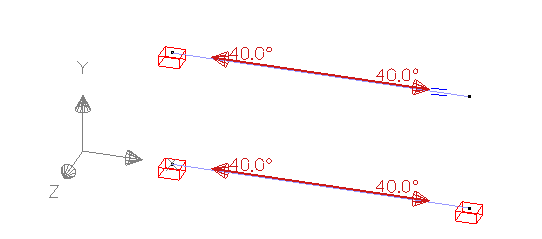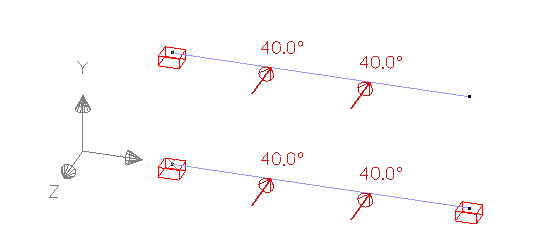Description

| Material | Modulus of elasticity | |
|---|---|---|
| Thermal dilation | ||
| Geometry | Cross-section | IPE 500 |
| Boundary conditions | Case 1: cantilever | |
| Case 2: fixed beam | ||
| Loads | Load 1: Global temperatur change |
|
| Load 2: Lineair gradient in local y’ direction |
||
| Load 3: Lineair gradient in local z’ direction |
||
| Mesh | No. of divisions | 8 |
Results
Load 1: global temperature change 
| Independent reference | Diamonds | Difference | ||
|---|---|---|---|---|
| Case 1 | Horizontal deformation |
2.4mm | 2.4mm | 0,00% |
| Case 2 | Axial force |
-1164.46kN | -1164.46kN | 0,00% |
Load 2: lineair gradient in local y’ direction 
| Independent reference | Diamonds | Difference | ||
|---|---|---|---|---|
| Case 1 | Angular rotation |
0.2750° | 0.2750° | 0,00% |
| Horizontal deformation |
12.0000mm | 12.0000mm | 0,00% | |
| Case 2 | Bending moment |
97,17kNm | 97,17kNm | 0,00% |
Load 3: lineair gradient in local z’ direction 
| Independent reference | Diamonds | Difference | ||
|---|---|---|---|---|
| Case 1 | Angular rotation |
0.6875° | 0.6875° | 0,00% |
| Horizontal deformation |
30.0000mm | 30.0000mm | 0,00% | |
| Case 2 | Bending moment |
10.79kNm | 10.79kNm | 0,00% |
References
- Hibbeler, R. (2006). Sterkteleer, 2/e. Pearson Education.
- Weaver, W., & Gere, J. M. (1990). Matrix analysis of framed structures Table B-2. In Springer eBooks. https://doi.org/10.1007/978-1-4684-7487-9
- Tested in Diamonds 2023r01.




